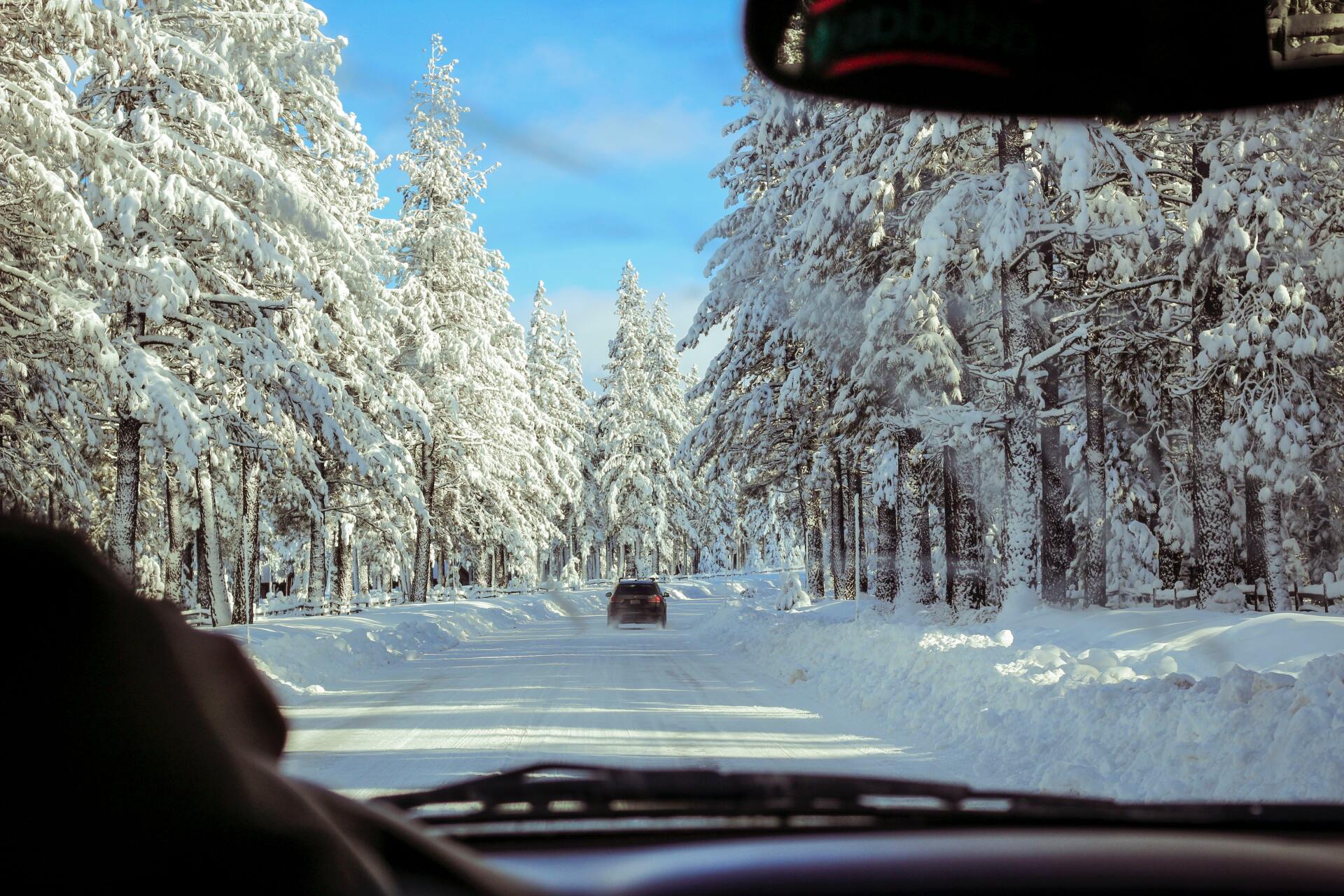
Prepare for the Drive
Here is a short guide to make it through the snowy and chilly winter!
If you can help it, don’t drive in the snow unless you have an all-wheel or four-wheel drive vehicle. Otherwise, wait until the roads have been properly plowed and salted.
If you drive in the snow, purchase tire chains for your vehicle. Practice putting them on before your trip. Follow signs advising when to install chains. Install them in a flat, safe area away from traffic.
Only use chains if there is a layer of snow or ice on the road. Do not drive with chains on a roadway without snow or ice, as this can damage your tires. Not all cars can utilize chains due to the clearance between the tire and wheel well; check your car’s manual. When driving on ice, use chains with spikes. For driving in the snow, use large link chains. For snow and ice, use large square links, which include ice spikes.

Before a winter storm hits, lift your wipers off the windshield, so they’re sticking straight out. This will prevent the snow from freezing the wipers onto the windshield. Once you’ve cleared your car from ice and snow, lower the wipers. Purchase new windshield wipers every six to twelve months or more often if you live in an area with lots of precipitation.
Ensure you pack extra clothes, food, water, and blankets. Keep a small bag of sand or cat litter in your car if you get stuck in the snow. Some local fire stations may give out sandbags. For cars with front-wheel drive, lay the sand or cat litter under the front wheels, straighten the steering wheel, and accelerate forward.
Black Ice
Driving is still unsafe even if it stops snowing. Black ice forms when water runoff from melted snow freezes on asphalt. It’s difficult to tell if the road is wet or covered in ice. Predict the formation of black ice by monitoring the outside temperature. If the temperature drops below freezing (32 F), there is likely black ice on the road.
Hydroplaning can occur on icy roads. If you lose control of your car, take your foot off the pedals. Steer in the direction that your car is sliding. If your vehicle veers in an unsafe direction, gently turn the steering wheel toward a safe path.
After the Storm
Invest in a snow shovel and an ice scraper or brush to remove ice and snow from your vehicle.
Before scraping ice and snow off your car, turn your car’s defroster and heat on full blast. Never pour water on your windshield to melt ice. Hot or warm water can shatter the windshield, and room temperature or cold water can freeze.

In place of an ice scraper, use a household broom and an old credit card.
Push large amounts of snow off the top of your car and windshield, dig out your vehicle, and create a wheel path using a snow shovel. Remove as much snow as possible from the top of your car. While driving, snow can fall onto your windshield and obscure your vision.
Remove snow and ice from headlights and taillights. Ensure your exhaust pipe is clear.
After tending to your vehicle, get warm as soon as possible. Ensure you have warm clothing and gloves.

Veterans Covert
Protection Group
contact@vcpg.us
San Francisco Bay Area
(925) 583-5223
Toll-Free
Montana Office
(406) 813-3236
CA PPO 120668
MT PPO PSP-EPI-LIC-41088
